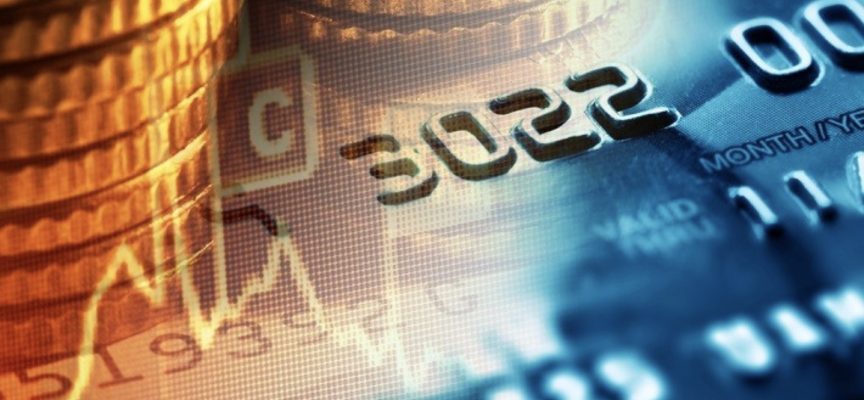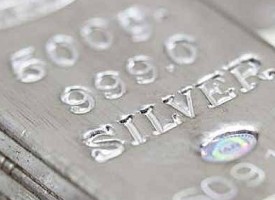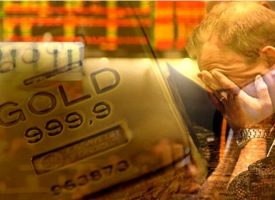As global markets near the end of another wild trading week, one of the greats in the business just flashed the major alert on gold and warned 2019 is going to be a wild year for financial markets.
Everything Is Cool
By Trey Reik, Senior Portfolio Manager, Sprott USA
November 23 (King World News) – On November 14, Fed Chair Jerome Powell and Dallas Fed President Robert Kaplan conducted an onstage question and answer session at the Dallas Fed. Responding to President Kaplan’s questions, Chair Powell’s cool-and-collected delivery made U.S. monetary policy seem like an absolute snap. The upbeat message from the Dallas stage was best summed by Mr. Powell’s observation that “Fed policy is part of the reason the economy is in such a good place right now.” However, because U.S. financial markets have remained noticeably rattled ever since Mr. Powell’s seemingly innocuous “long way from neutral” comment on 10/3/18, we find it constructive to parse cautious nuggets in Chair Powell’s copasetic narratives.
Along these lines, Chair Powell seemed to imply from the Dallas stage a subtle downshift in telegraphed Federal Open Market Committee (FOMC) tightening in stating “we have to be thinking about how much further to raise rates and the pace at which we will raise rates.” After referencing potential headwinds of slowing growth abroad, fading fiscal stimulus and lagged effects of eight Fed hikes, Chair Powell eventually narrowed in on one specific area of growing Fed concern: excessive corporate leverage. In Mr. Powell’s soft-spoken words, “There is some significant corporate borrowing and we have our eyes on that.” Having subsequently refreshed our focus on U.S. corporate debt levels, we can only characterize Chair Powell’s matter-of-fact depiction as dramatic understatement.
Corporate Leverage Locomotive
We have suggested improving U.S. bank balance sheets foster false investor confidence that the excessive leverage at the root of the financial crisis has been repaired. In reality, as the Fed has dedicated eight years and trillions of dollars to nursing systemically important banks back to health, QE (quantitative easing) and ZIRP (zero interest rate policy) have progressively compromised the financial strength of the U.S. corporate sector. Not only have share buybacks imperiled countless balance sheets in the name of ephemeral EPS (earnings per share) gains, but the bulk of U.S. corporate governance has eroded into a culture of undisciplined borrowing and zombie credits…
IMPORTANT:
To learn which junior explorers is looking to drill some of the best holes in the world CLICK HERE OR ON THE IMAGE BELOW
 Sponsored
Sponsored
Low rates and high share prices have distracted investors from the post-crisis explosion in corporate leverage. The total U.S. corporate bond market has almost tripled from $2.4 trillion in December 2006 to $6.7 trillion today. The junk portion of that total represents a startling $1.2 trillion. As the purview of hedge funds and aggressive investors, the junk market is essentially cordoned-off from the far more relevant $5.4 trillion investment grade market, in which the vast majority of institutions are restricted by charter to focus their investments. After years of relaxed financial conditions, however, almost half the investment grade universe is now composed of bonds rated Triple-B, the lowest investment-grade category (up from one-third in 2006). This means that roughly $2.6 trillion of investment grade debt hovers just one category above junk status. Further, as rating agencies have factored in declining debt-service in a ZIRP world, the average ratio of total debt-to-EBITDA in the BBB universe has soared from 2.0x in December 2006 to 3.3x today.
To us, it seems pretty clear there are growing rumblings for at least a pause in rate hikes. Gold will erupt if this transpires.
As troubling as all of this sounds, it appears that Chair Powell and his colleagues are not particularly concerned by the fact that junk and BBB credits now constitute a daunting 58% of the U.S. corporate debt structure. Fed stewards are apparently more focused on a particularly unsavory nook in the corporate-borrowing landscape called leveraged loans. To those unsure exactly what defines a leveraged loan, we offer a quick synopsis from Andy Lees (Macro Strategy):
“A leveraged loan is a loan that is extended to junk rated (BB+ or lower), over-indebted companies. These loans are considered too risky for banks to keep on their books. Instead, banks sell them to loan funds, or they package them into highly-rated Collateralized Loan Obligations (CLOs) and sell them to CLO funds and other institutional investors. Investors earn a set amount of interest — the so-called margin — on top of the prevailing LIBOR benchmark rate. As the LIBOR rises, so too does the interest. The loans’ floating interest rates offer investors some degree of protection from rising rates, until, of course, the borrower defaults. As the market has grown, the lending terms have loosened.”
Doesn’t this all sound vaguely familiar? Completing parallels with the subprime mortgage experience, leveraged loans now total $1.3 trillion, so the category is already larger than the 2006 subprime mortgage market and growing just as fast. S&P estimates total 2018 leveraged-loan origination is likely to exceed last year’s record $650 billion.
Even more disturbing, fully 79% of today’s leveraged loans are “covenant-light,” meaning they contain little or no financial-performance safeguards for the lender (such as minimum debt-service ratios). Just as was the case with interest-only mortgages in 2007, covenant-light loans are lending instruments originally designed solely for borrowers of impeccable pedigree, but today are increasingly available even at the lowest echelons of creditworthiness.
Todd Vermilyea, Head of Risk, Surveillance and Data at the Federal Reserve’s Division of Supervision and Regulation raised eyebrows in his 10/24/18 address to New York’s Loan Syndications and Trading Association by bluntly warning,
“I will expand on trends that supervisors are observing that indicate there may be material loosening of terms and weakness in risk management of the leveraged-loan market. Some institutions could be taking on risk without the appropriate mitigating controls.”
We recall how the subprime episode introduced esoteric real estate terminology into the common vernacular — phrases such as “negative amortization” and “no-doc verification.” According to Mr. Vermilyea’s highly specific narrative, a new crop of Wall Street alchemists is now redefining boundaries within the covenant-light vocabulary. Mr. Vermilyea highlighted troubling features such as “incremental facilities” and “sidecars” (which he explained allow additional borrowing of equal seniority with existing bank loans, even for non-earning purposes such as special dividends, all without the consent of the lender), “EBITDA add-backs” (which add-back expenses and cost savings to earnings), and “collateral stripping” (which transfers secured collateral beyond the reach of senior creditor banks creating a competing lending class with equal priority claims). As John McEnroe loved to protest, “You can’t be serious!”
Look At What Is Happening With Junk Yield
 Figure 1: Yield of Bloomberg Barclays U.S. Corporate High Yield Index (Yield-to-Worst) (2012-11/16/18)
Figure 1: Yield of Bloomberg Barclays U.S. Corporate High Yield Index (Yield-to-Worst) (2012-11/16/18)
Given the Fed’s mounting discomfort with the leveraged-loan sector, combined with the fact that these loans generally float with LIBOR (London Interbank Offered Rate), it seems logical to assume the Fed would pause its rate-hike regimen in the face of any unambiguous sign of sharp tightening in high-yield credit markets. As shown in Figure 1, the yield on the Bloomberg Barclays U.S. Corporate High Yield Index blew out to 719 basis points on 11/16/18, completing a 16.3% jump in just six weeks. Chair Powell may look incredibly relaxed onstage, but we suspect he is a bit more concerned than he lets on.
Good Things to Life
So what type of catalyst might trigger dislocation in the fragile layers of the U.S. corporate credit market? Along comes General Electric (GE), as recently as 2015 one of four remaining AAA-rated corporations in the United States. Egregious mismanagement by successive CEO’s had leveraged GE’s triple-A status into a mind-numbing $336 billion obelisk of debt by 2009. Subsequent exit from the highly levered financial services business, coupled with a few other key divestitures, has slimmed GE’s debt load back to a still-unwieldy $115 billion. During the past two years, well-publicized reckoning of prior corporate missteps has pummeled GE’s stock price 74.6% (from $31.50 on 12/31/16 to $8.02 on 11/16/18).
We see GE as the ultimate poster child for how rising rates will unapologetically rationalize malinvestments hidden by eight years of QE and ZIRP. Given GE’s iconic pedigree and towering debt load, bond rating agencies have struggled with how to address GE’s rapidly declining fortunes. On 11/2/18, Fitch made it unanimous among the big three rating agencies that GE bonds had toppled all the way to BBB+ (three “notches” above junk). Should $115 billion of GE paper be downgraded to junk, it would instantly swell the size of the entire junk bond market by 10%!…
ALERT:
To see the symbol for the only gold explorer in the world with no debt and a
massive treasury that has seen insiders buy more than 3 million shares
in the open market CLICK HERE OR BELOW
As usual, real-world traders are already well ahead of rating agencies. By 11/16/18, GE’s benchmark 7-year bond ($2 billion issue) had collapsed to a price of 84.55 (Figure 2), creating a yield-to-maturity spread of 303 basis points over Treasuries, significantly wider than the 275 basis point spread for bonds in the top-rated tranche of the junk-bond universe (Bloomberg Barclays Index of U.S. Corporate Bonds rated BB+, BB, and BB-, average maturity 6.5 years). Since September, GE’s prominent 5-year credit default swap has quintupled in price, from 52 basis points to 259 basis points (Figure 3). Finally, GE’s immaculate reputation in commercial paper markets has now dissolved into reliance on $41 billion in short-term credit lines from a syndicate of more than 30 banks. Is GE a one-off, or a sign of things to come? We would suggest it’s ONLY the beginning.
Former Bellwether GE Is Imploding

Ebbing Tides
We have maintained that financial asset prices cannot sustain rising rates with this much debt in the global financial system. We have presented our case that Fed rate hikes are already causing financial stress in peripheral markets, and now this stress is washing ashore in the form of cardiac arrest at long-troubled American icons such as GE and Sears. Boiling things down, between December 2015 and December 2017, the Fed hiked rates five times over the span of 25 months. More recently, the Fed is attempting to achieve the same five rate hikes in just 13 months, or in roughly half the timeframe. Not only are 2018 hikes occurring at twice the pace of immediately prior experience, simple geometry outlines a trajectory extending twice as far from the nurturing tonic of the zero bound. If our analysis is correct, there should be a discernible and measurable impact of the Fed’s accelerating tightening on global financial assets of all shapes and sizes. The considered work of Deutsche Bank strategist Craig Nicol casts illuminating light on the global impact of the Fed’s accelerated pace of 2018 rate hikes. For those unfamiliar with Craig’s work, he memorializes annual performance statistics for a wide range of global assets in a (very) long-term Deutsche Bank database. Currently, Craig logs monthly performances for 71 global asset classes, including equity and debt indices for 20 developed markets and 10 emerging markets, as well as 11 benchmark credit and commodity indices.
Through 11/15/18, an amazing 90% of the assets in the global Deutsche Bank universe had posted negative year-to-date returns in U.S. dollar terms. As shown in Figure 4, the 90%-negative-return figure is the highest percentage in the 118-year history of the survey, eclipsing the prior high of 84% back in 1920. In stark contrast to 2018, during the ebullience of 2017 markets, fully 99% of the global assets in the Deutsche Bank universe posted positive total return in U.S. dollar terms, with the sole exception being the Philippine bond market. To repeat, the percentage of negatively-performing global assets in U.S. dollar terms has risen from a record-low 1% to a record high 90% over the span of just 10 ½ months.
 Figure 4: Percentage of Global Assets with Annual Negative Total Return in U.S. Dollar Terms (1901-11/15/18)
Figure 4: Percentage of Global Assets with Annual Negative Total Return in U.S. Dollar Terms (1901-11/15/18)
Given the importance of the U.S. dollar in global debt and trade, we favor Craig’s dollar-denominated analysis, but we also present in our Addenda graph Craig’s analysis in local currencies — to us, it tells the same story. We are obviously partial to the argument, but we wonder how long consensus can write-off such divergent annual performances of so many asset classes as merely coincidental to 2018 accelerations in both the pace of Fed rate hikes and the pace of Fed balance sheet reduction.
What will it take for consensus to recognize the Fed is too tight?
Short-Term Gold Docket
For the first time in Mr. Powell’s tenure as Fed Chair, his steady-as-we-go narrative (this time in Dallas) seems to have motivated FOMC colleagues to lodge alternate voices in unusually rapid succession. Or, more likely, the Fed is executing a classic good-cop-bad-cop sequence to condition markets for a change in policy stance. Whatever the true motivation, it is interesting that immediately following Mr. Powell’s confident 11/14 soliloquy about pitch-perfect Fed policy, one Governor and three Bank Presidents chimed in within 48 hours with significantly more dovish public comments. First, on 11/15, Atlanta Fed President (and 2018 FOMC voter) Rafael Bostic was distinctly more cautious in observing,
“I don’t think we are too far from a neutral policy, and neutral is where we want to be. We may not be there quite yet, but I am inclined to think that a tentative approach as we proceed would be appropriate.”
Second, on the morning of 11/16, Fed Vice Chairman (and permanent FOMC voter) Richard Clarida mentioned in a live CNBC interview,
“There is some evidence of global slowing. That’s something that is going to be relevant as I think about the outlook for the U.S. economy, because it impacts big parts of the economy through trade and capital markets and the like.”
What caught most people’s attention was that, in answer to a question about the neutral fed funds rate, Governor Clarida seemed to drop the low end of the Fed’s telegraphed 3.0% range in replying “somewhere between 2.5 percent and 3.5 percent.” Following Mr. Clarida’s comment, spot gold promptly spiked $7 within 15 minutes. This type of hyper-sensitive reaction in the gold-price to intra-day Fed jawboning belies growing market sensitivity to the potential for imminent change in Fed policy.
Third, later in the day on 11/16, Dallas Fed President Robert Kaplan (and Chair Powell’s 11/14 onstage questioner) opined in a Fox Business News interview, “It’s my judgment that global growth is going to be a little bit of a headwind, and it may spill over to the United States.”
Finally, Philadelphia Fed President Patrick Harker ran the table of 11/16 Fed fine-tuning in flatly declaring in an afternoon Wall Street Journal interview, “At this point, I’m not convinced a December rate move is the right move.”
There you have it — Fedspeak at its finest! To us, it seems pretty clear there are growing rumblings for at least a pause in rate hikes. Gold will erupt if this transpires.
In context of possible Fed jiggering of future policy expectations, it is also interesting to note recent movements in COMEX gold positioning. The gold-bearish spec community, after recently reversing a two-month foray into net-short territory during August and September (with four straight weeks of nominally net-long positioning), has once again changed-course back into net-short range during the week ended 11/13/18. It is our strong assumption that the latest switch was triggered by spot gold falling below its 50-day moving average on Friday 11/9. As luck would have it, spot gold did not cooperate with this popular technical-trading signal and closed on Friday 11/16 at $1,221.50, significantly above its 50-day moving average ($1,211.26) and its 100-day moving average ($1,213.88). These converging moving averages will now be monitored very closely by spec shorts. We expect them to serve as underlying support for the balance of 2018.
Holiday Wishes
As we head into the holiday season, hopefully a time of peaceful reflection for all, we cannot resist pointing out that U.S. Congresswoman Maxine Waters’ 28 years of service in the House of Representatives place her in position to Chair the House Financial Services Committee beginning 1/4/19. At a November rally in California’s 43rd congressional district, Representative Waters addressed supporters in observing just how wide her scope of oversight will be over the U.S. financial system.
“I will chair the powerful Financial Services Committee. That’s all of Wall Street. That’s all the insurance companies. That’s all the banks.”
Then, in her opening remarks at a Committee hearing with Fed Vice-Chair Randy Quarles on 11/14/18, Representative Waters delivered a preview of her Wall Street-combative conception for appropriate banking regulation,
“Make no mistake, come January, in this committee, the days of this committee weakening regulations and putting our economy once again at risk of another financial crisis will come to an end.”
Our advice is to get plenty of rest over the holidays, because 2019 is shaping up to be quite an eventful year for financial markets.
***KWN has now released the remarkable audio interview with Dr. Stephen Leeb and you can listen to it by CLICKING HERE OR ON THE IMAGE BELOW.
ALSO JUST RELEASED: An Important Message About Gold & What To Expect Next In Major Markets CLICK HERE TO READ.
© 2018 by King World News®. All Rights Reserved. This material may not be published, broadcast, rewritten, or redistributed. However, linking directly to the articles is permitted and encouraged.









